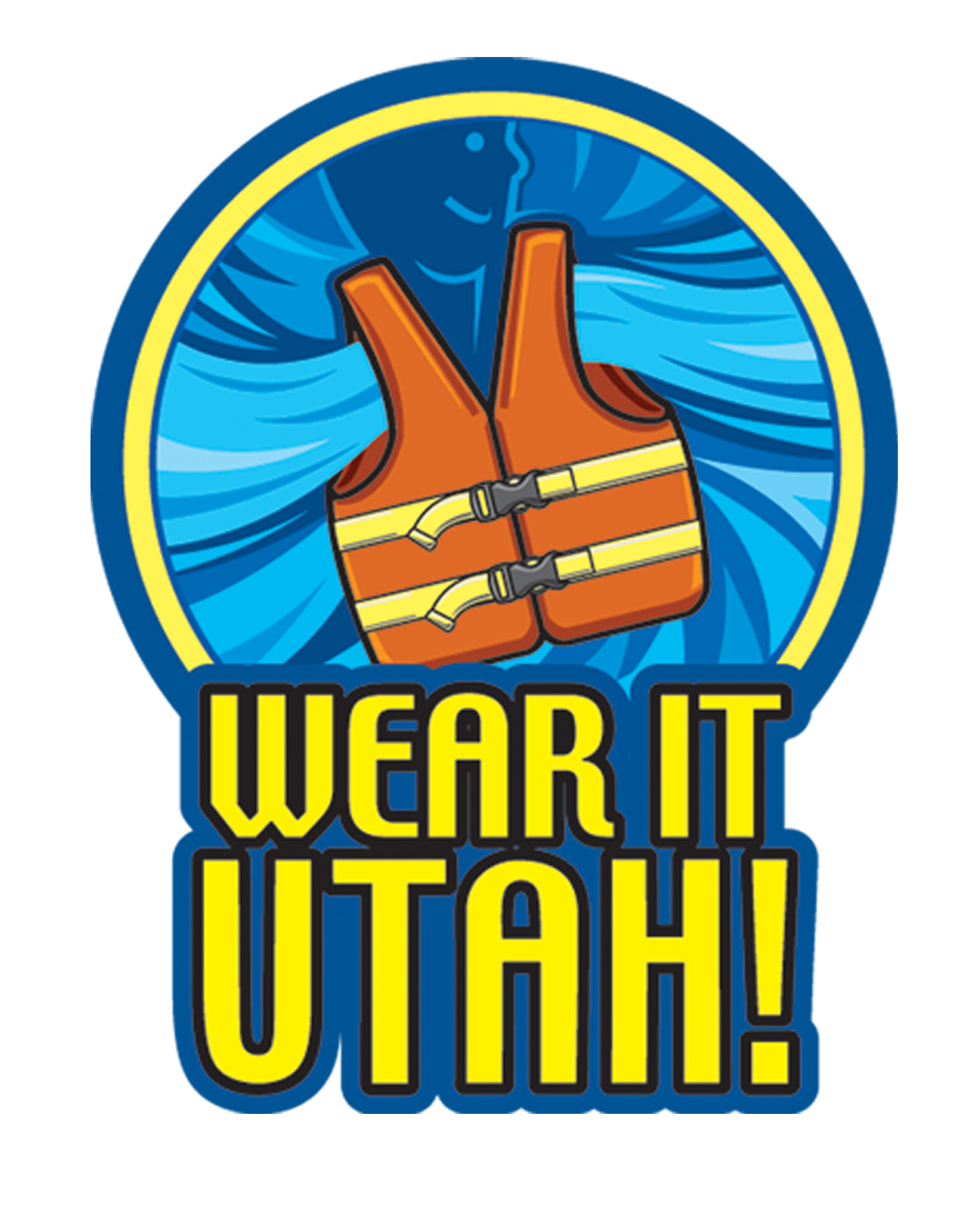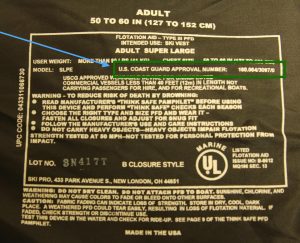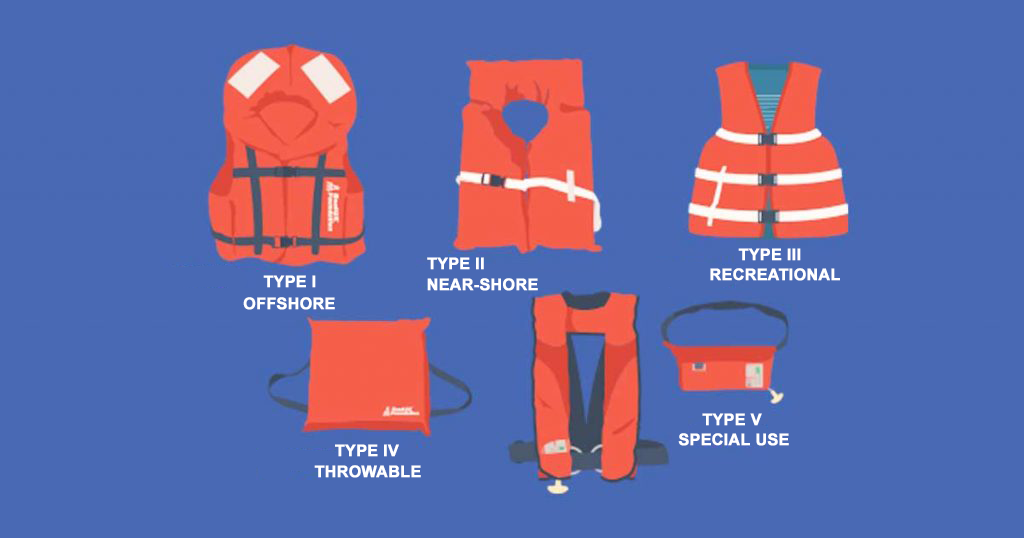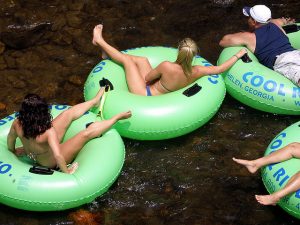Life Jackets
Life Jackets Save Lives!
Nationally, 80% of people who drowned in boating accidents would have survived had they been wearing a life jacket. Wear it Utah!
How to Choose the Right Life Jacket
Choosing a life jacket can seem daunting if you have never done it before. With so many different types, styles, and other options, new boaters can have seemingly endless choices. Watch the video below for a good rundown on how to choose the right life jacket.
Remember: Utah law says there must be at least one properly sized U.S. Coast Guard-approved life jacket for each person aboard a vessel. Life jackets must be readily accessible and not in an out-of-reach location or in original packaging.
 Is Your Life Jacket Serviceable?
Is Your Life Jacket Serviceable?
According to U.S Coast Guard standards, life jackets should be serviceable and inspected often. Before using your life jacket or personal floatation device (PFD, inspect and make sure that:
- PFD is free of rips, tears, and holes in the fabric.
- Seams, straps, and buckles should are in good condition.
- PFD is free of mildew odor and waterlogging.
- Buoyant material isn’t showing any sign of shrinkage.
- There aren’t any leaks (only if your PFD uses bags of kapok, a naturally buoyant material). To check for leaks, gently squeeze the bag. If there is a leak, throw the PFD away.
- The U.S. Coast Guard-approved label is legible.
If a PFD does not meet serviceable requirements, it should not be used and should be cut up and thrown away.
Is Your Life Jacket U.S. Coast Guard Approved?
Utah law requires that all boats have at least one wearable U.S. Coast Guard-approved life jacket of proper size, in good and serviceable condition, and readily accessible for each person on board.
All life jackets must be used in accordance with the age, weight, activity, and use restrictions listed on the U.S. Coast Guard approval label.
How can you tell if a Life Jacket is U.S. Coast Guard-approved?
- READ THE LABEL! All approved life jackets will have a U.S. Coast Guard approval number on the label (see photo).
- An approved life jacket will provide more buoyancy (thicker flotation).
Non-approved U.S. Coast Guard vests may ONLY be worn in sanctioned U.S. towing competitions and ONLY when approved. Remember, just because it helps you float does not mean it is an approved PFD. Many types of wakeboarding and watersport vests do not have adequate floatation. Always check your label.
The Different Types of Life Jackets
Life jackets are grouped into categories called “Types.”
All life jackets are classified as Type I, II, III. IV, or V
Type I – Offshore Life Jacket.
- Effective for all waters, especially open, rough or remote waters where rescue may be delayed.
- Acceptable for use on all vessels.
- Provides the most buoyancy of any type of PFD. Designed to turn unconscious wearers face up in the water.
Type II – Near-Shore Buoyancy Vest
- Intended for calm, inland waters or where there is a good chance of quick rescue.
- Designed to turn some unconscious wearers to a face-up position in the water.
Type III – Near-Shore Recreational Vest
- Good for conscious users in calm, inland waters.
- Designed so conscious wearers can place themselves in a face-up position in the water.
- The wearer may have to tilt their head back to avoid turning face-down in the water
Type IV – Throwable Devices
- Not designed to be worn.
- Designed to be thrown to a person in the water and grasped and held by the user until rescued.
- Must be immediately accessible. (See R651-215-5)
Type V – Special Use Device
- Intended for specific activities and may be carried instead of another PFD if used according to the approval conditions on its label.
Who Needs to Wear a Life Jacket?
- Children under a certain age are required to wear life jackets (under 13 years of age).
- Participants engaged in towing activities, anyone on a PWC, river sections that are not designated as flatwater are required to wear a life jacket.
- Any boat 16’ and longer (except canoes and kayaks) must carry a throwable PFD called a Type IV
Throwable devices must be immediately available for use such as in the cockpit or near the helm
Even squirrels need a life jacket!
Paddle Sports Requirements
Standup paddleboards (SUP), kayaks, and canoes are becoming more popular on Utah’s waters. Familiarize yourself with the rules of the water before heading out!
- Each vessel must have at least one U.S. Coast Guard-approved wearable or inflatable life jacket for each person on board.
- Those 12 years of age and younger must wear a life jacket at all times.
- You should also carry a spare paddle, bail bucket, and whistle. (Spare paddle and bail bucket are not required for SUP).
Remember: your craft does not need to be registered in Utah unless a motor or sail is attached.
Tubing and Life Jackets
Can you guess what is missing from the tubers on the right? If you guessed life jackets, you’re right!
On rivers, every person on any vessel, including inner tubes, must wear a properly sized and approved life jacket.
Users of non-standard manually propelled vessels, such as air mattresses and inner tubes, are required to comply with life jacket laws when being used on any river or when more than 50 feet away from shore (except in a marked swimming area).
For persons older than 12 years of age, life jackets may be loosened or removed only while on designated flat-water river sections. Contact the Utah State Parks Boating Program for a listing of designated flatwater river sections in Utah.
Here are some tips for tubers
- Make sure to wear a life jacket and have a whistle handy.
- Buy a nice tube made of thicker rubber with an abrasion cover.
- Don’t litter! No glass or styrofoam on the water!
- Wear shoes to protect your feet from sharp objects.
How to Fit a Life Jacket On a Child
Life jackets are important for everyone’s safety. This INCLUDES babies, toddlers, and other small children.
We get a lot of questions about fitting life jackets on children. Check out the video below for a great demonstration!
Swimming From a Boat Safety Reminder
Unless one person remains on board to operate the boat, swimming from an unanchored boat can create a dangerous situation. Wind can cause the boat to drift, leaving swimmers stranded in the water. It is safe practice to wear your life jacket while swimming from your boat in open water.
Types of Inflatable Life Jacket
U.S. Coast Guard-approved inflatable life jackets are rated as Types I, II, III, or V, and are more comfortable and less bulky to wear than traditional life jackets.
Some models automatically inflate when submerged in the water, while all models can be manually or inflated by mouth. If you plan to wear an inflatable life jacket, read the approval label for age, use restrictions and proper care. ·
There are two types of inflatable jackets:
- Manual– Chamber inflates only when the “jerk to inflate” tab is pulled OR by blowing into the tube.
- Automatic– Chamber inflates automatically when submerged in water OR when “jerk to inflate” tab is pulled OR by breathing into the oral tube.
An inflatable life jacket must be properly armed with an unused gas cylinder.
Inflatable life jackets have these components:
- An air-holding chamber.
- Inflation tube to add air to chamber orally, and deflate a chamber.
- A source of compressed gas, usually CO2.
Whether you choose an inflatable life jacket or an inherently buoyant life jacket, choose to wear it! Your life depends on it!
Inflatable PFD Options
Inflatable life jackets have the advantage of being lightweight, compact, comfortable, and the least bulky of all life jacket designs. Inflatable jackets also have the convenience of being available in one universal size.
There are 3 types of inflatable life jacket styles:
- Suspender-style is worn over the shoulders. The thin profile and lightweight design offer comfort and an excellent range of motion.
- Vest-style has fuller body coverage with built-in pockets for storage.
- Belt packs are worn around the waist, to the front. This design allows for comfort without obstruction.
What’s your excuse?
Non-Approved Inflatable PFDs
Not all inflatable life jackets are U.S. Coast Guard approved.
- Ski Belts
- Impact Vests
- If the PFD is frayed, ripped, or sun-faded
Whether you choose an inflatable life jacket or an inherently buoyant life jacket, choose to wear it! Your life depends on it!





